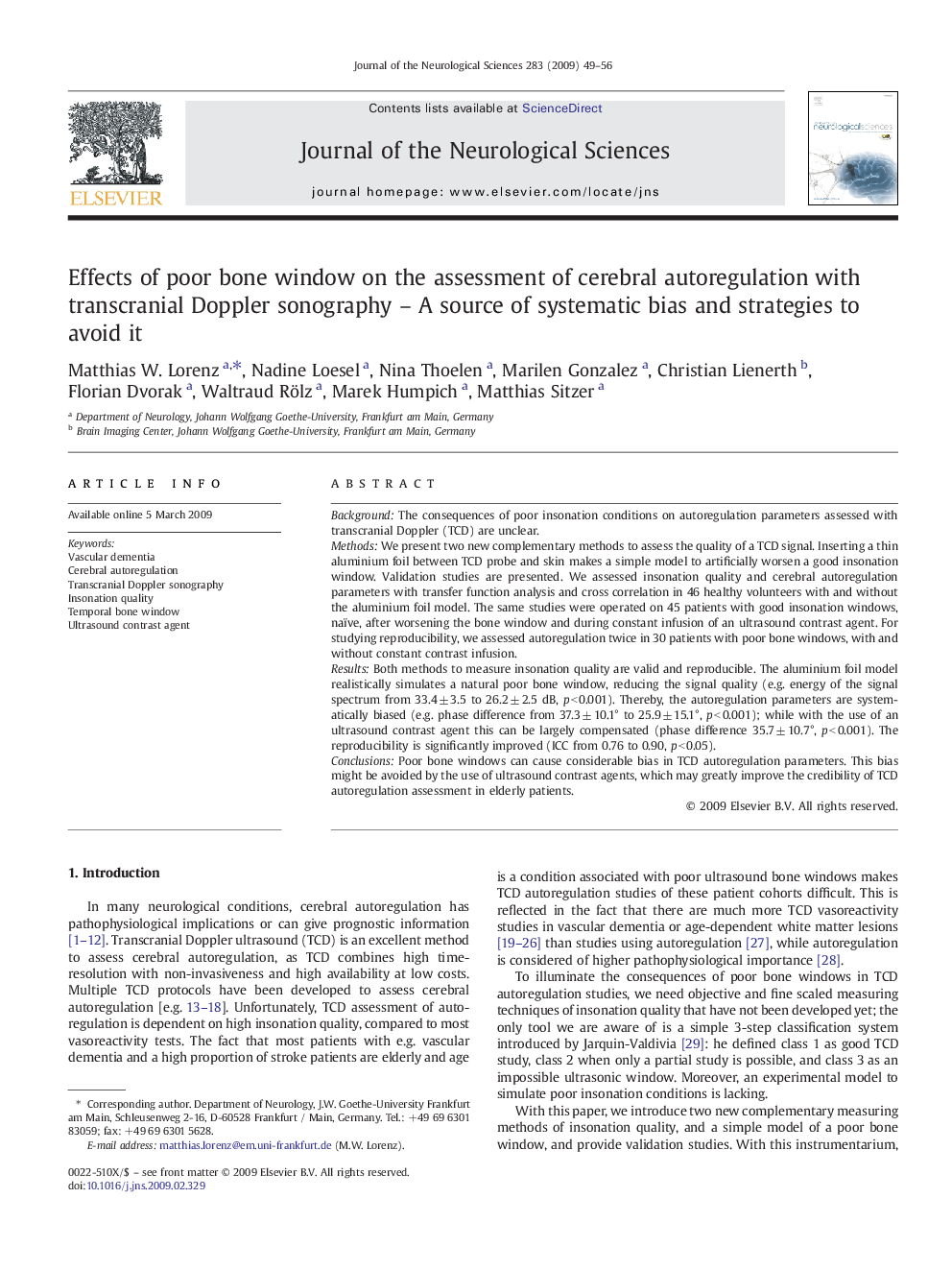| کد مقاله | کد نشریه | سال انتشار | مقاله انگلیسی | نسخه تمام متن |
|---|---|---|---|---|
| 1915198 | 1535179 | 2009 | 8 صفحه PDF | دانلود رایگان |

BackgroundThe consequences of poor insonation conditions on autoregulation parameters assessed with transcranial Doppler (TCD) are unclear.MethodsWe present two new complementary methods to assess the quality of a TCD signal. Inserting a thin aluminium foil between TCD probe and skin makes a simple model to artificially worsen a good insonation window. Validation studies are presented. We assessed insonation quality and cerebral autoregulation parameters with transfer function analysis and cross correlation in 46 healthy volunteers with and without the aluminium foil model. The same studies were operated on 45 patients with good insonation windows, naïve, after worsening the bone window and during constant infusion of an ultrasound contrast agent. For studying reproducibility, we assessed autoregulation twice in 30 patients with poor bone windows, with and without constant contrast infusion.ResultsBoth methods to measure insonation quality are valid and reproducible. The aluminium foil model realistically simulates a natural poor bone window, reducing the signal quality (e.g. energy of the signal spectrum from 33.4 ± 3.5 to 26.2 ± 2.5 dB, p < 0.001). Thereby, the autoregulation parameters are systematically biased (e.g. phase difference from 37.3 ± 10.1° to 25.9 ± 15.1°, p < 0.001); while with the use of an ultrasound contrast agent this can be largely compensated (phase difference 35.7 ± 10.7°, p < 0.001). The reproducibility is significantly improved (ICC from 0.76 to 0.90, p < 0.05).ConclusionsPoor bone windows can cause considerable bias in TCD autoregulation parameters. This bias might be avoided by the use of ultrasound contrast agents, which may greatly improve the credibility of TCD autoregulation assessment in elderly patients.
Journal: Journal of the Neurological Sciences - Volume 283, Issues 1–2, 15 August 2009, Pages 49–56